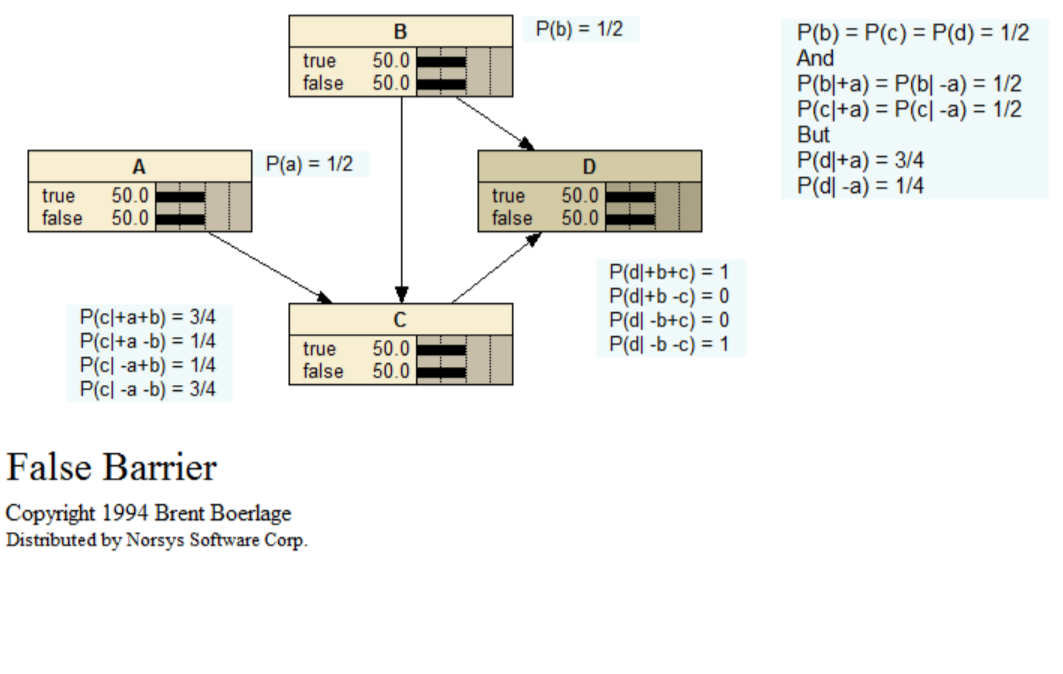False Barrier

In order to express the belief in a node as a function, it must be expressed as a function of the joint beliefs of its Markov boundary nodes (i.e. the beliefs in the Cartesian product of their values). Thinking in terms of paths can obscure this. Consider the False Barrier BN illustrated:
When there is no evidence, the beliefs of A, B, C, and D are all 1/2. If we get evidence TRUE for A, the beliefs of B and C remain at 1/2, but the belief at D changes to 3/4. Thinking in terms of a constraint network, or "flow of influence along paths," it is hard to see how a change at A can create a change at D without changing the beliefs at B or C. Of course, it is the joint belief in B and C which have changed (BEL (+b+c) changes from 1/4 to 3/8, BEL(+b-c) changes from 1/4 to 1/8, etc). Therefore, we must be careful with the path concept.
Paper link: <www.norsys.com...>
 Bayesian Intelligence
Bayesian Intelligence